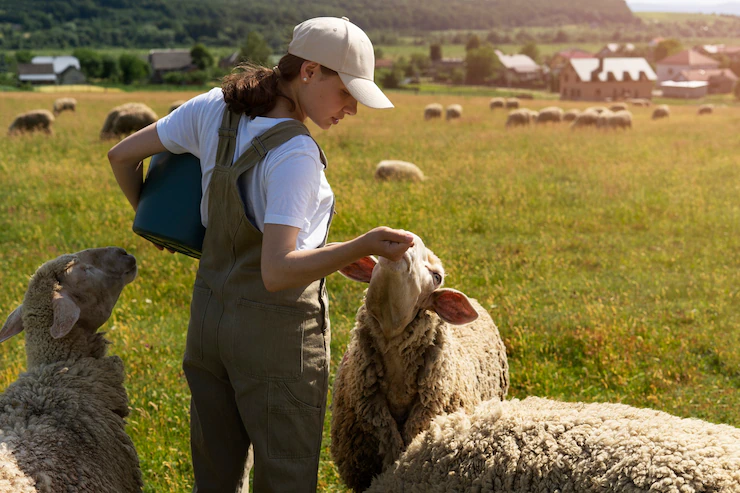Sustainable livestock grazing and pasture management strategies aim to promote the long-term health and productivity of grazing lands while minimizing environmental impacts. These strategies focus on optimizing forage utilization, maintaining soil health, conserving water resources, and supporting biodiversity. Here are some key principles and practices for sustainable livestock grazing and pasture management:
- Rotational Grazing: Rotational grazing involves dividing pastures into smaller paddocks and moving livestock between them periodically. This approach allows forage plants to recover and regenerate while preventing overgrazing. It also helps distribute manure more evenly, reducing the risk of nutrient imbalances and soil degradation.
- Rest and Recovery Periods: Providing adequate rest and recovery periods for pastures is crucial. Grazing lands need time to regrow and build up root reserves before being grazed again. Monitoring plant growth and implementing rest periods accordingly helps maintain plant health and productivity.
- Proper Stocking Rates: Determining appropriate stocking rates is essential to avoid overgrazing. Stocking rates should consider factors such as forage availability, soil fertility, and climatic conditions. Understocking can result in underutilization of forage resources, while overstocking can lead to overgrazing and degradation of pastures.
- Diverse Forage Mixtures: Planting diverse forage mixtures enhances pasture resilience and productivity. Different plant species have varying growth habits, root depths, and nutritional profiles, which helps optimize forage production and nutrient cycling. Mixing grasses, legumes, and forbs can also improve soil health by fixing nitrogen and increasing organic matter content.
- Water Management: Implementing water management strategies is crucial for sustainable grazing. This includes providing adequate water sources for livestock, implementing efficient irrigation practices, and preventing water pollution through runoff control measures. Proper water management ensures livestock hydration, supports plant growth, and minimizes soil erosion.
- Soil Health Management: Maintaining soil health is vital for sustainable grazing. Practices such as avoiding overgrazing, managing nutrient inputs, and reducing soil compaction help preserve soil structure and fertility. Implementing soil testing, applying appropriate amendments, and promoting organic matter accumulation can improve nutrient availability and water-holding capacity.
- Riparian Area Protection: Riparian areas, such as stream banks and wetlands, are ecologically sensitive zones that require protection. Fencing off these areas prevents direct livestock access, reduces erosion, and preserves water quality. Maintaining vegetative buffers along water bodies helps filter runoff and provides habitat for wildlife.
- Monitoring and Adaptive Management: Regular monitoring of pasture conditions, forage quality, and livestock performance is essential for adaptive management. By collecting data and observing trends, land managers can make informed decisions about adjusting grazing strategies and implementing necessary changes to ensure sustainability.
- Collaboration and Knowledge Sharing: Engaging with other land managers, local communities, and agricultural organizations can provide valuable insights and foster knowledge sharing. Participating in workshops, field days, and research projects can help access new ideas, technologies, and best practices for sustainable grazing.
By adopting these strategies, livestock producers can promote sustainable land use, improve animal welfare, and contribute to the conservation of natural resources while maintaining productive and profitable operations.
Join 'Farmers Mag' WhatsApp Channel
Get the latest Farming news and tips delivered straight to your WhatsApp
CLICK HERE TO JOIN






